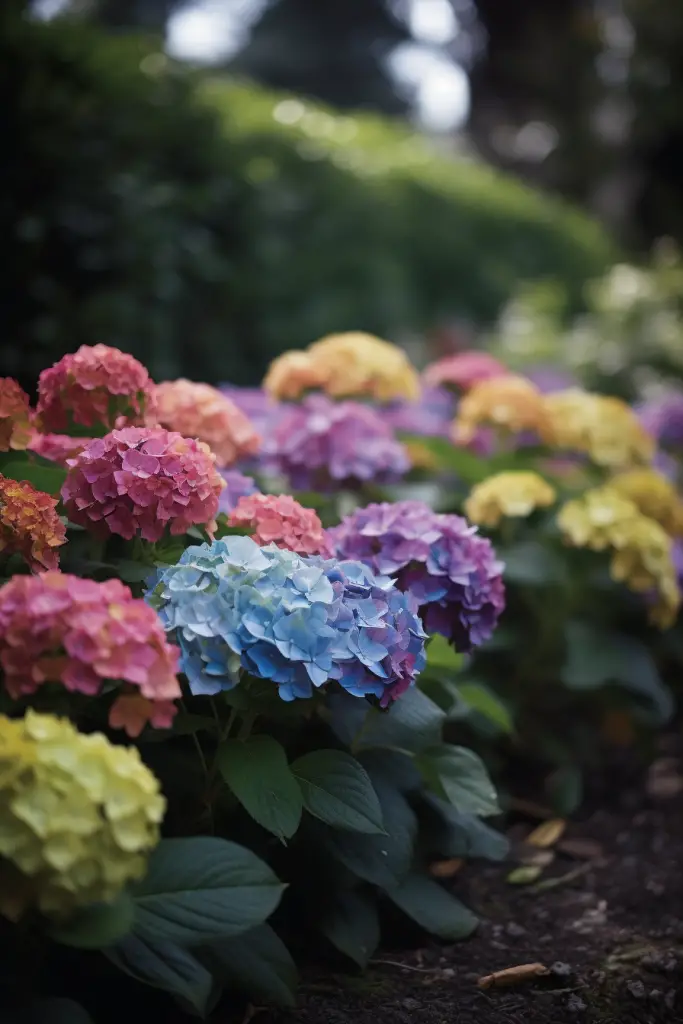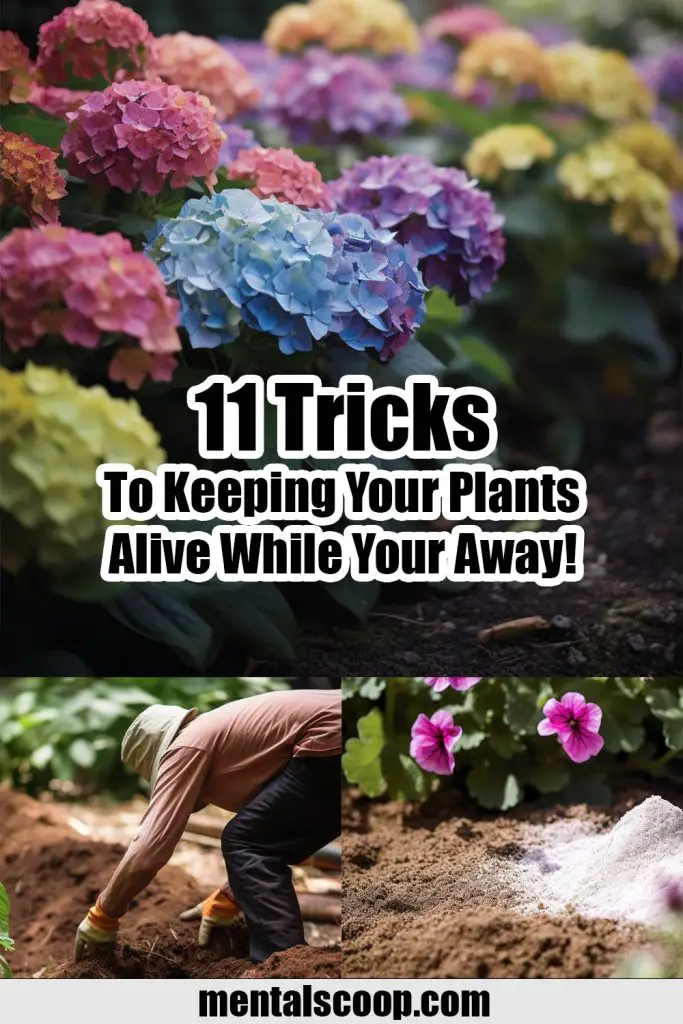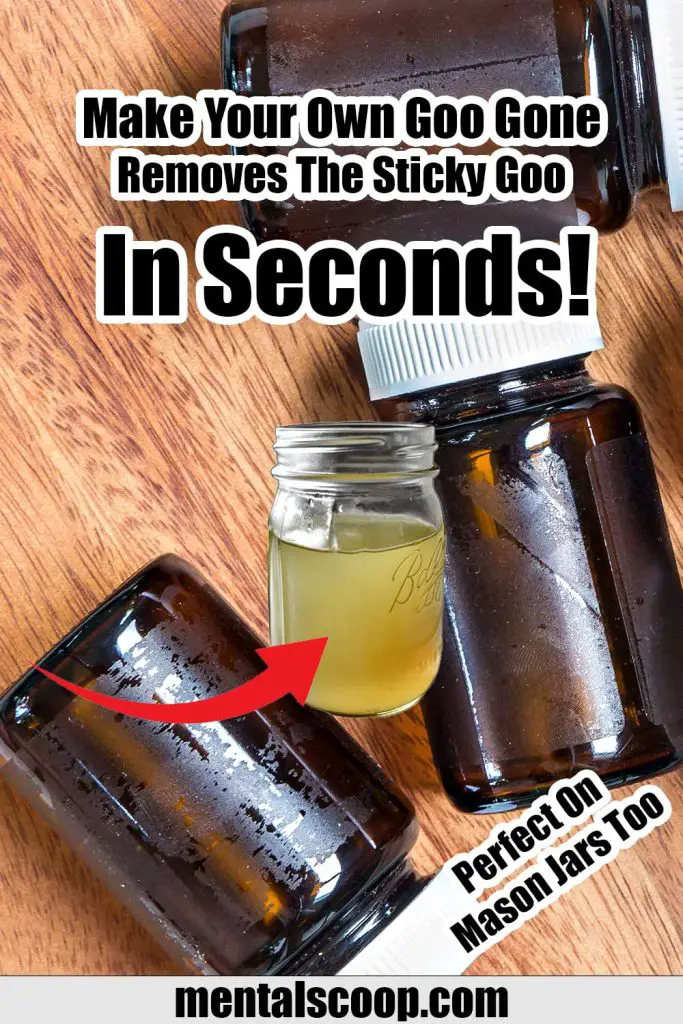
Having a beautiful garden is a joy for many of us, but it can be a daunting task to maintain when we go away on vacation or have to travel for an extended period of time. While there are several ways to keep your garden flowers alive when you are away, the key is to plan ahead and make necessary arrangements so that your plants get the care they need even when you are not around.
In this article, we will look at some of the best ways to ensure your garden flowers stay healthy and vibrant while you are away.
Watering
The most important factor to consider when leaving your garden unattended is watering. Plants need water to survive, and without proper watering, they can wilt and die quickly. Before leaving, make sure to water your plants thoroughly.
It’s a good idea to water them deeply and less frequently rather than lightly and frequently. This will allow the roots to grow deep and strong and help your plants retain moisture for longer periods.
If you have a sprinkler system, set it to water your garden in the early morning or late evening when temperatures are cooler, and less water is lost to evaporation. Alternatively, you can invest in a drip irrigation system that will slowly release water directly into the soil, ensuring that your plants get the moisture they need without wasting water.
If you are leaving for a longer period, consider asking a trusted neighbor or friend to water your plants regularly. Alternatively, hire a professional gardener to take care of your garden while you are away.
Mulching
Mulching is another great way to keep your garden flowers healthy while you are away. Mulch acts as a protective layer, retaining moisture in the soil, preventing weed growth, and regulating soil temperature. Apply a thick layer of mulch around the base of your plants to help them retain moisture and reduce the need for frequent watering.
Some good materials for mulching include straw, leaves, grass clippings, and wood chips. Be sure to avoid using mulch that may contain weed seeds or chemicals that could harm your plants.
Pruning
Pruning is essential for the health and growth of your plants. It helps remove dead or diseased parts of the plant, allowing new growth to thrive. Before leaving, make sure to prune any dead or damaged branches and leaves from your plants.
Pruning can also help your plants conserve energy and water by reducing the number of leaves that need water and nutrients. This can be especially helpful if you are leaving for an extended period.
Fertilizing
Fertilizing your plants is crucial for their growth and health. Before leaving, apply a slow-release fertilizer to your garden. Slow-release fertilizers provide a steady supply of nutrients to your plants over time, ensuring they get the nutrients they need to thrive even when you are not around.
Alternatively, you can use organic fertilizers such as compost or worm castings, which will not only provide nutrients but also improve the soil structure and fertility.
Pest Control
Pests and diseases can quickly damage your plants, especially when they are left unattended. Before leaving, inspect your plants for any signs of pest or disease infestation. If you notice any problems, treat them promptly with appropriate measures.
There are several organic pest control methods you can use, such as neem oil, insecticidal soap, or garlic spray, that will help keep pests away while also being safe for your plants and the environment.
Shade and Shelter
Excessive heat and wind can quickly damage your plants, especially during the summer months. Before leaving, consider providing shade and shelter to your plants to protect them from harsh weather conditions.
One way to do this is by installing shade cloth over your garden. Shade cloth can reduce the intensity of the sun’s rays, helping to keep your plants cool and protected from excessive heat. You can also use umbrellas or temporary structures to provide shade to your plants.
If you live in an area with strong winds, consider providing some shelter to your plants. You can use netting or fabric to create a windbreak around your garden, or you can move your potted plants to a more sheltered location.
Automated Systems
If you want to take the hassle out of watering your plants while you are away, consider investing in an automated watering system. There are several options available, such as sprinkler timers, drip irrigation systems, and even smart irrigation systems that can be controlled remotely using your smartphone.
Automated watering systems can be set up to water your plants at specific times and for specific durations, ensuring your plants get the right amount of water without wasting any. Some systems can even adjust watering schedules based on the weather conditions, so you don’t have to worry about overwatering or underwatering your plants.
Deadheading
Deadheading is the process of removing spent flowers from your plants. It helps promote new growth and keeps your plants looking neat and tidy. Before leaving, make sure to deadhead any spent flowers from your plants. This will help redirect the plant’s energy towards producing new flowers, rather than producing seeds.
Deadheading can also help prevent the spread of diseases, as some diseases can be transmitted through spent flowers.
Plant Selection
Finally, when planning your garden, consider selecting plants that are more resilient and require less maintenance. Some plants are more drought-resistant, while others can tolerate extreme temperatures or require minimal pruning.
Choosing plants that are well-suited to your local climate and soil conditions will ensure they are more likely to thrive even when you are not around to care for them.
Overall
keeping your garden flowers alive while you are away requires careful planning and preparation. By following the tips outlined in this article, you can ensure your plants get the care they need, even when you are not around.
Remember to water your plants thoroughly before leaving, apply a thick layer of mulch, prune any dead or damaged branches, fertilize your plants, and provide shade and shelter as needed. Consider installing an automated watering system, deadhead spent flowers, and choose plants that are well-suited to your local climate and soil conditions. With a little bit of planning, you can enjoy a beautiful and healthy garden all year round.

More interesting articles you may be interested in reading:

How To Remove A Tree Stump Painlessly
10 Vital Home Maintenance Tasks You’ll Regret If You Forget
See How Much Propane Is Left In A Tank With No Gauge
Thanks for reading and be sure to share this info with your friends using the social share buttons below.
Talking about social stuff, consider liking our Facebook page to keep up to date with our articles. Check out our other articles for more mental scoops!
